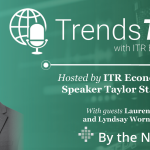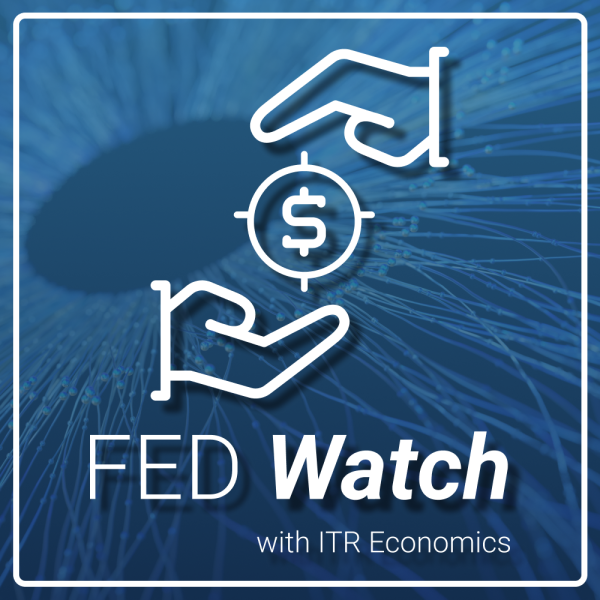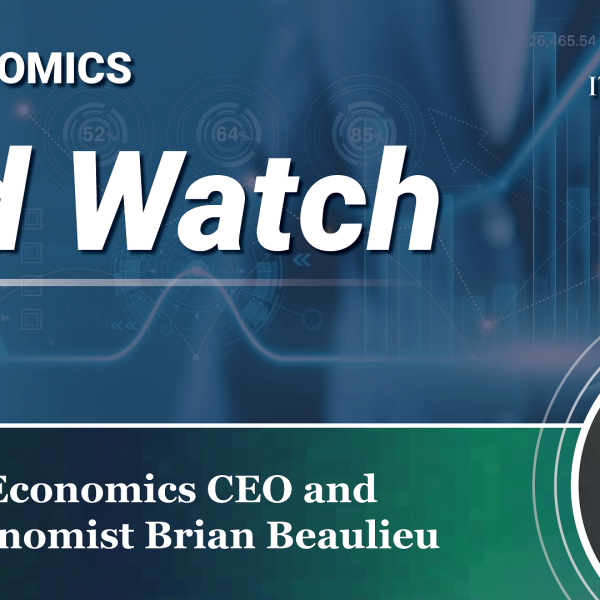- Mon - Fri: 8:30 - 5:00
- +1-603-796-2500
- ITR@itreconomics.com
with Brian Beaulieu
WEEKLY FED WATCH
This week on Fed Watch, ITR Chief Economist Brian Beaulieu discusses the various indicators that could influence the Federal Reserve Board’s decision to lower rates and the potential for interest rate cuts toward the end of this election year.
Key Episode Takeaways
- 0:10 – Speculation on whether the Federal Reserve Board will lower the federal funds rate
- 0:39 – Analyzing the various economic indicators that may influence the Fed’s decision
- 3:03 – The next Executive Summary in Insider will discuss inflation and implications for interest rates
- 3:47 – Further insight into potential interest rate cuts later this year
The below transcript is a literal translation of the podcast audio that has been machine generated by Rev.
Hello, thank you for joining us for this edition of Fed Watch. Today is June 7th. I’m Brian Beaulieu from ITR Economics. The speculation amped up a little bit about the Fed’s will they or won’t they drop the Fed funds rate because the ECB, European Central Bank, dropped their benchmark rate 25 bips from a record high 4.0 down to 3.75, jumping ahead of the Federal Reserve and perhaps putting a little bit of pressure on them.
We’re still thinking that September is the first probable time that we’ll see the Fed move lower with their interest rates. And there’s lots of supporting data for that. The purchasing managers index put out by the ISM weakened.
Well, it stayed weak I should say in May, stayed below 50, it’s a diffusion index and below 50 is not good. Although it was slightly less negative in May, but negative is still negative. Retail sales for automobiles, that 1/12 rate-of-change which had been negative for April moved back into positive territory.
But the 3/12 and 12 /12 are still firmly in phase C. We’re looking at decelerating rise. And that’s not a surprise. We saw some further deceleration in real personal income. People are feeling a little bit of this pinch, the slowdown in their incomes, wages aren’t going up as fast as they had been before.
Although that still remains problematic from the Fed’s perspective. When I was looking at the automobile retail sales data for grins and giggles, I looked at Tesla in particular. And Tesla’s 1/12 rate-of-change for May was minus 21 and change and the 3/12 is minus 13.7.
And Tesla’s data trend is in decline right now. So Tesla’s big part of, although the numbers aren’t that large, a big part though of why we’re seeing some further weakening in automobile retail sales.
Non-residential construction data came out this week. That also showed some deceleration in the rate of rise, pretty much across the board. All that stimulated ascent in certain parts of non-res construction, it can’t be maintained any more than the post COVID run up and retail sales could be maintained.
The big question in our mind is going to be, is there going to be a hole in demand on the other side of this or what’s going to happen on the other side once these big projects run out? Are we looking at another COVID phenomenon, another COVID echo in other words?
If you are an ITR Trends Report subscriber, make sure you read the executive summary that’s going to be coming out in a few days. In there, I talked about the next wave of inflation, why we think it’s coming, gave you some places to look.
We’ve talked about the next wave coming. I just laid out some more specifics and what it’s likely to mean for interest rates in the executive summary. And as always, I hope you’re watching by the numbers.
If you go on ITR Economics YouTube and there’s a free version there, you’ll hear Lauren Saidel-Baker and Lyndsay Wornham discussing teenage entry into the workforce. It’s a nice easy way for you to get some more distillation of what we are thinking.
And there Lauren talks about our thoughts on home prices, home insurance and what that means for the broader economy. It’s worthwhile, it’s interesting stuff. It’s not like you have to be zeroed in on it.
Going back to interest rates just for a moment, and this is where I’ll leave you. There is a survey taken of other economists and most of them are thinking there’s gonna be an interest rate decline in September and another one followed in November.
And that struck me as odd. It’d be very odd in my experience for the Fed to lower interest rates while people are going to the polls in the same month that they’re going to the polls. They try not to be so overtly political.
They are obviously political but they don’t wanna be so overtly. So maybe September they’ll wait and we’ll get another Christmas present out of it or maybe October, or maybe we’re just gonna get the one but I wouldn’t hold my breath on a November decline given the election cycle.
We still think there’s one coming. One isn’t gonna change a whole heck of a lot. From our perspective, we’re gonna get more than just one but they may wait until 2025 to give us some more decline, they being the marketplace in general.
The market didn’t move much from April to May. So there’s no indication from the market yet. They may be waiting to see what the fed has up their sleeve and we have some more months to go. Thank you for watching this edition of FedWatch.
See you next week.




